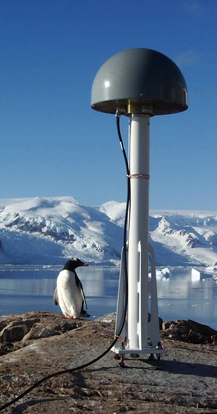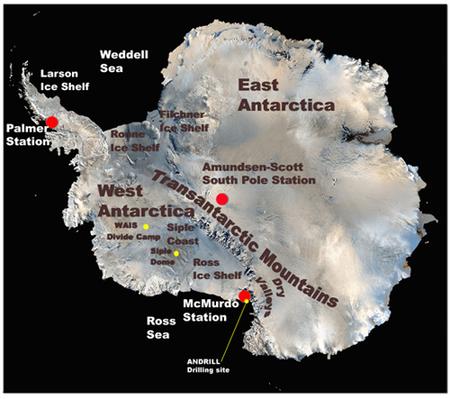Guest commentary by Matt King, Michael Bentley and Pippa Whitehouse
 Determining whether polar ice sheets are shrinking or growing, and what their contribution is to changes in sea level, has motivated polar scientists for decades. Genuine progress began in the early 1990s when satellite observations started to provide (nearly) spatially comprehensive sets of observations. Three very different, and hence complementary, approaches are now employed, although each has a particular limitation:
Determining whether polar ice sheets are shrinking or growing, and what their contribution is to changes in sea level, has motivated polar scientists for decades. Genuine progress began in the early 1990s when satellite observations started to provide (nearly) spatially comprehensive sets of observations. Three very different, and hence complementary, approaches are now employed, although each has a particular limitation:
- Satellite altimetry: measurements of ice sheet volume changes from laser or radar altimeters (e.g. IceSat) can be converted to mass changes through correction of spatially- and temporally-varying surface density together with spatial extrapolation to unsampled regions. The main limitation lies in the models used to correct for surface density changes.
- Input-minus-output: calculating the difference between the mass of snow accumulated and that of the ice (and meltwater) being discharged gives the mass imbalance. The snow accumulation is normally estimated from numerical models and the discharge is computed using the multiple of measured velocity at the edge of the ice sheet with its measured or inferred ice thickness and density. Thus, uncertainty in accumulation models and sub-glacial topography at the grounding line propagate into mass balance uncertainties.
- Satellite gravimetry: changes in Earth’s gravity field can be measured from satellite (e.g. from Gravity Recovery and Climate Experiment, GRACE) and used to determine changes in ice mass but only after accounting for mass-change effects that are not due to ice mass redistribution – in particular the glacial isostatic adjustment (GIA).
Our recently published Nature paper (King et al, 2012), used GRACE gravity data to infer the ice mass trends as in previous work, but with an updated estimate of the GIA correction.
[Read more…] about Weighing change in Antarctica
References
- M.A. King, R.J. Bingham, P. Moore, P.L. Whitehouse, M.J. Bentley, and G.A. Milne, "Lower satellite-gravimetry estimates of Antarctic sea-level contribution", Nature, vol. 491, pp. 586-589, 2012. http://dx.doi.org/10.1038/nature11621
